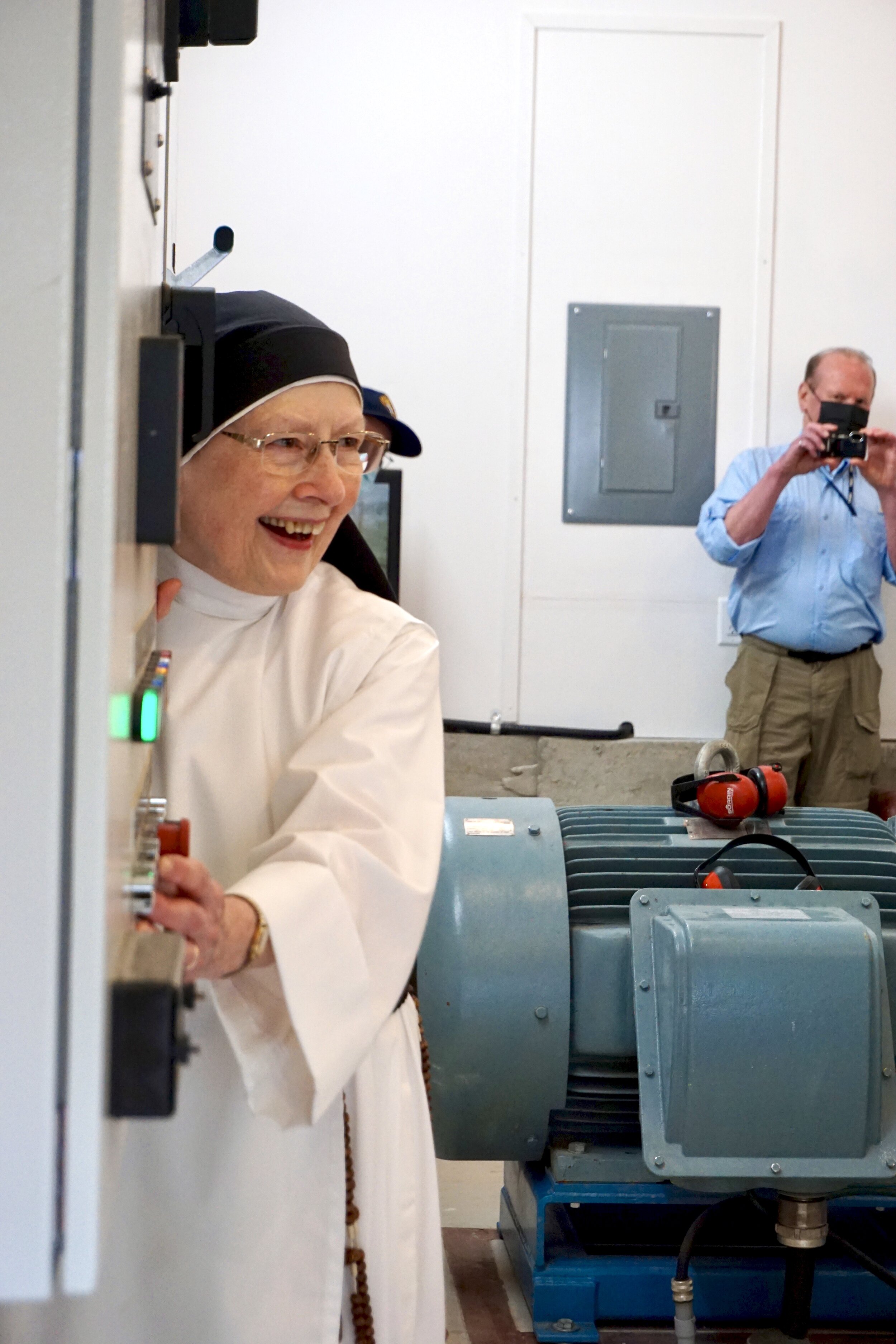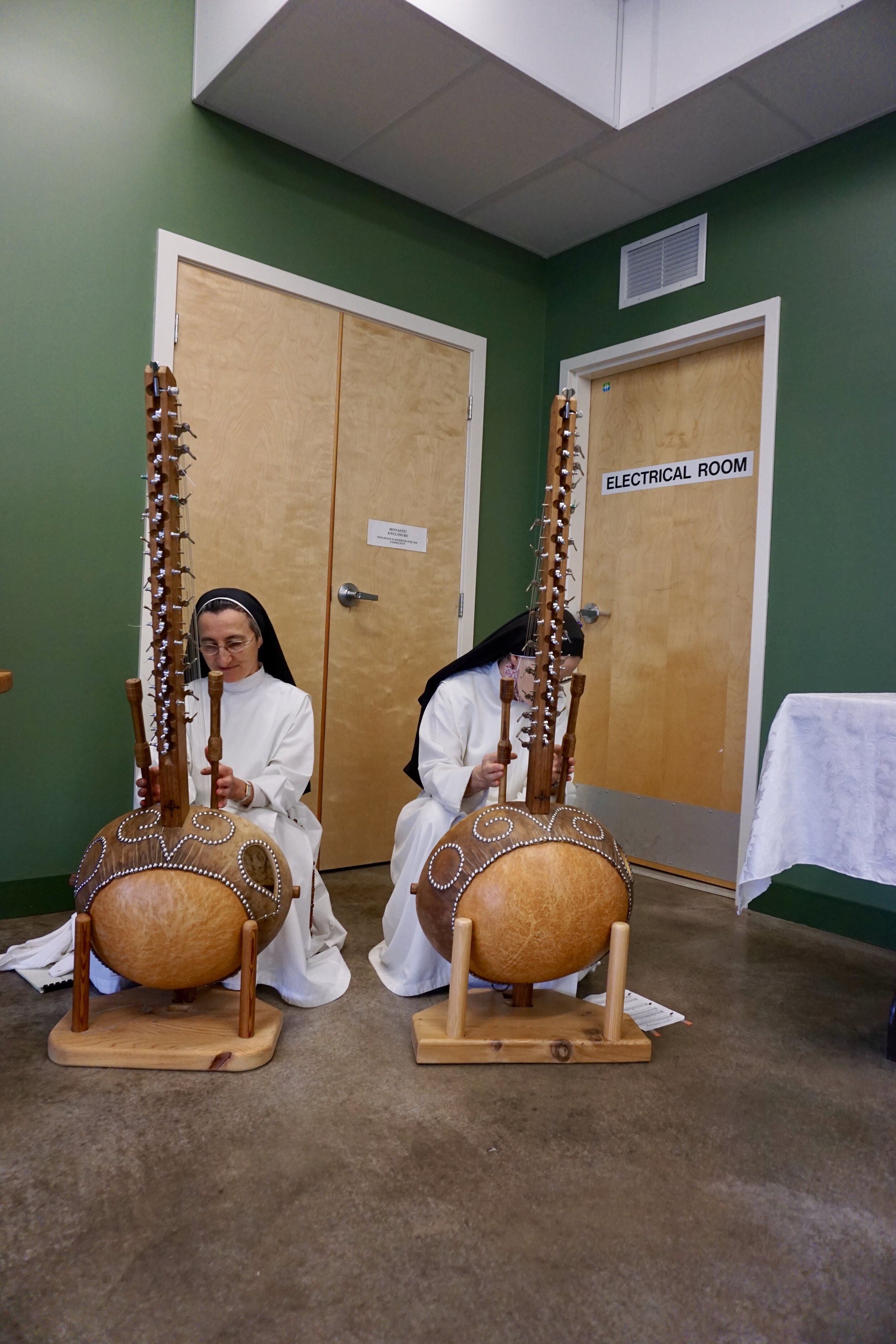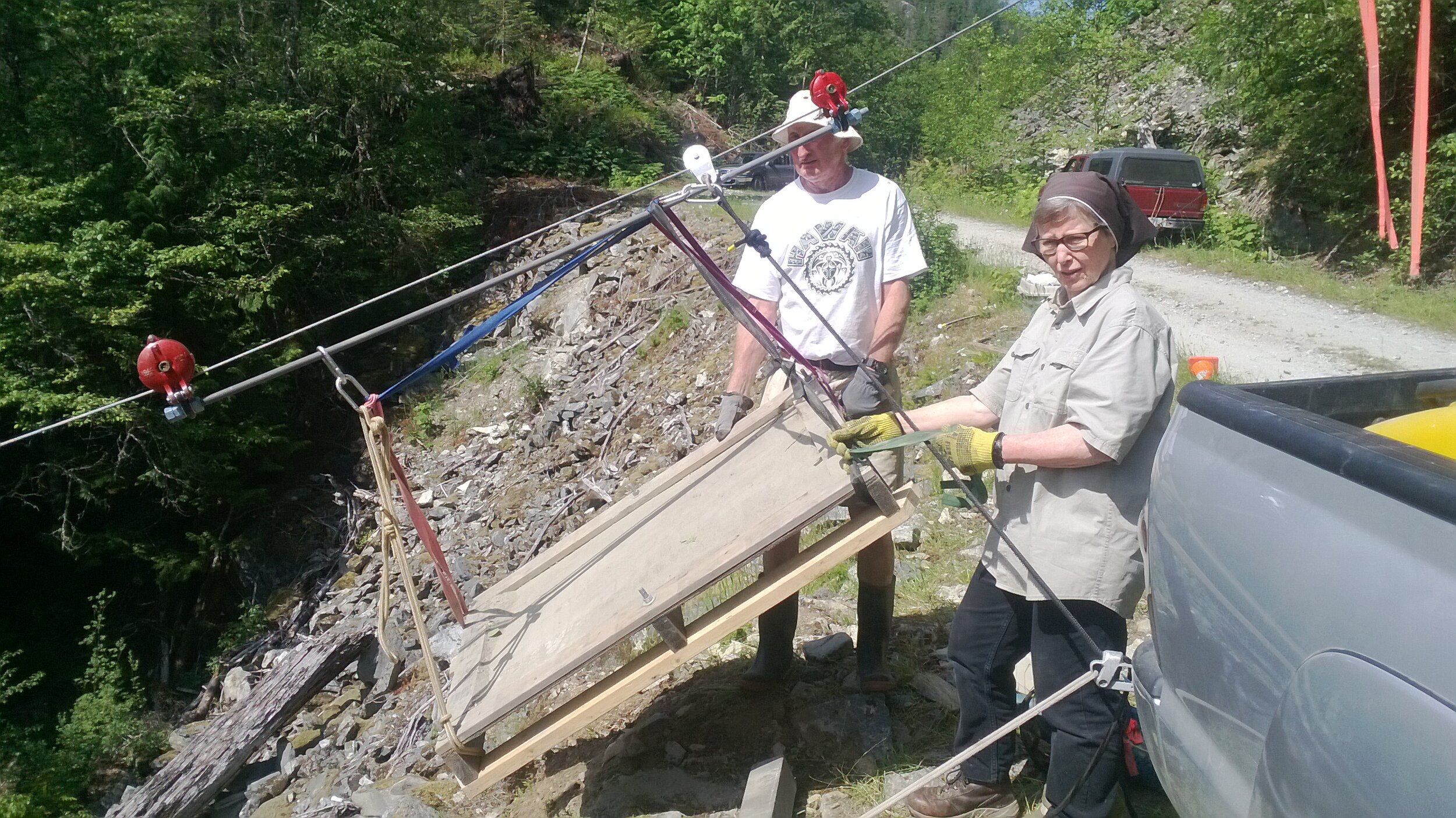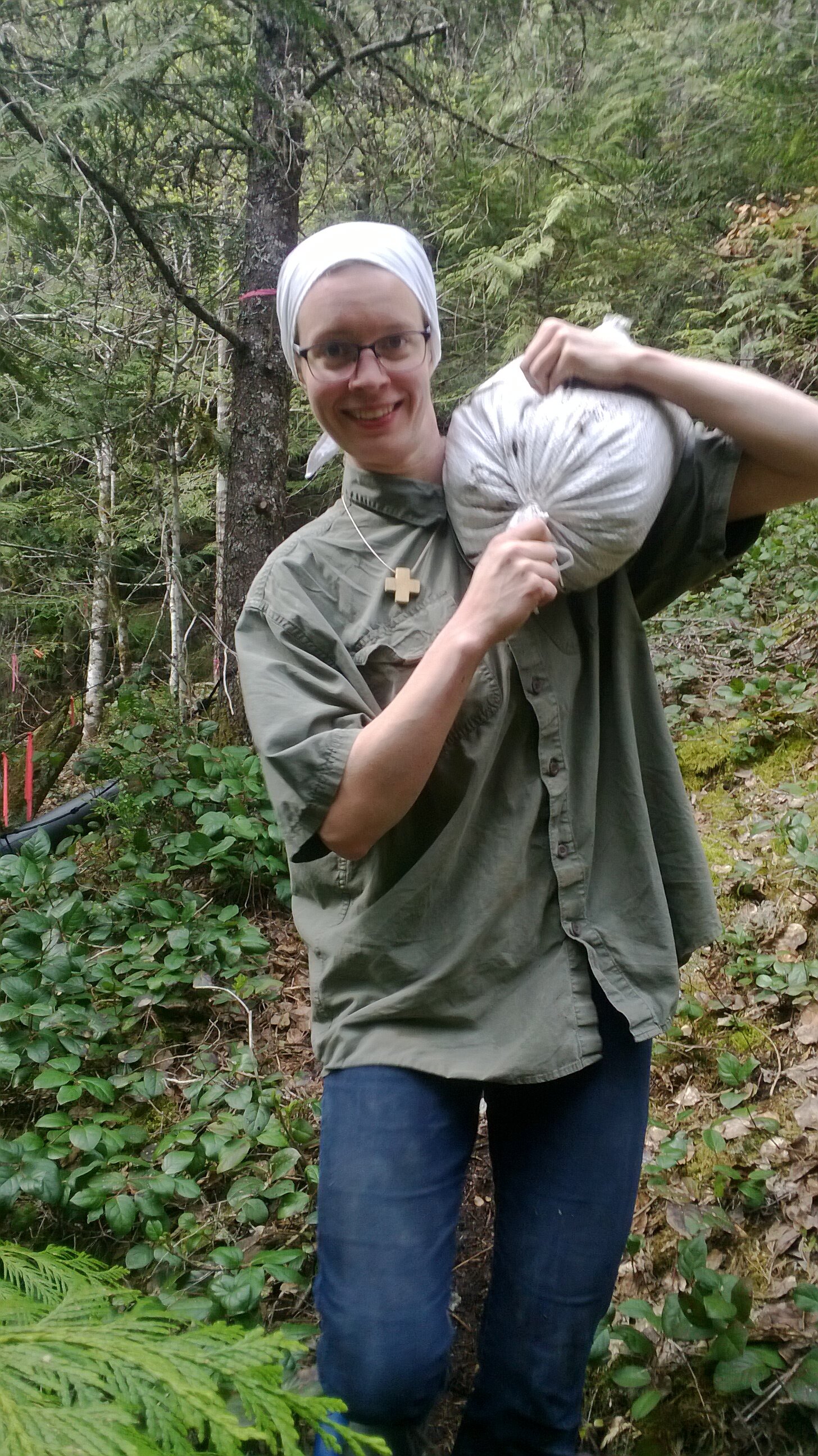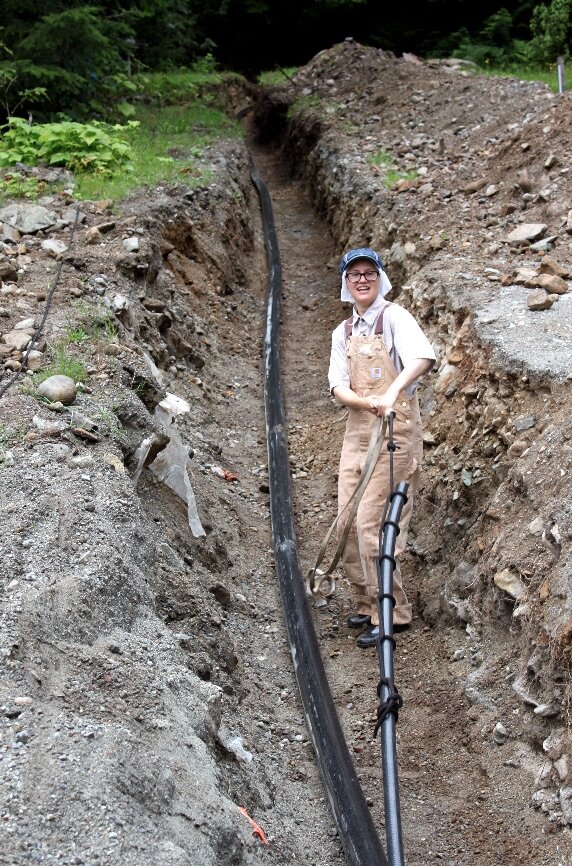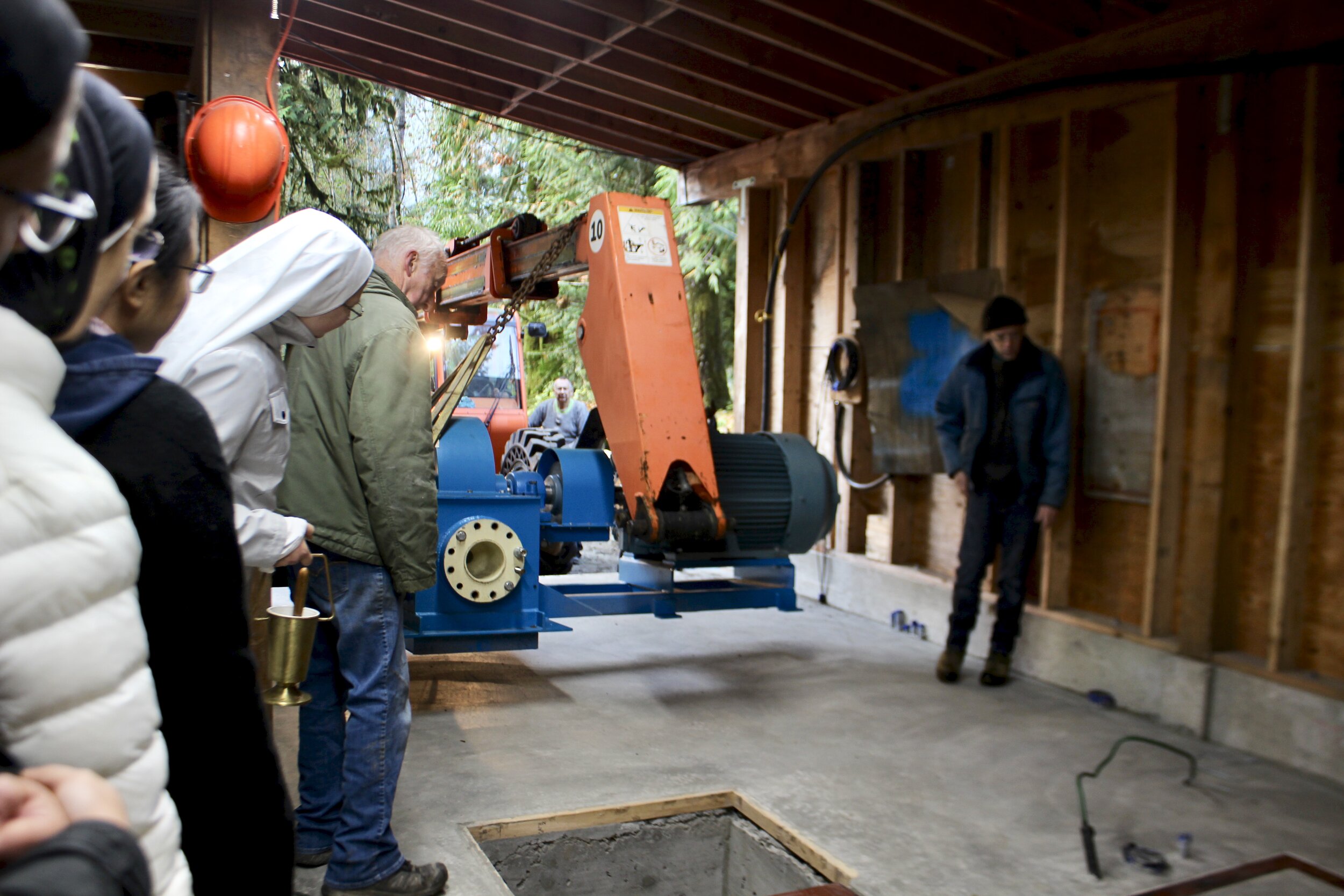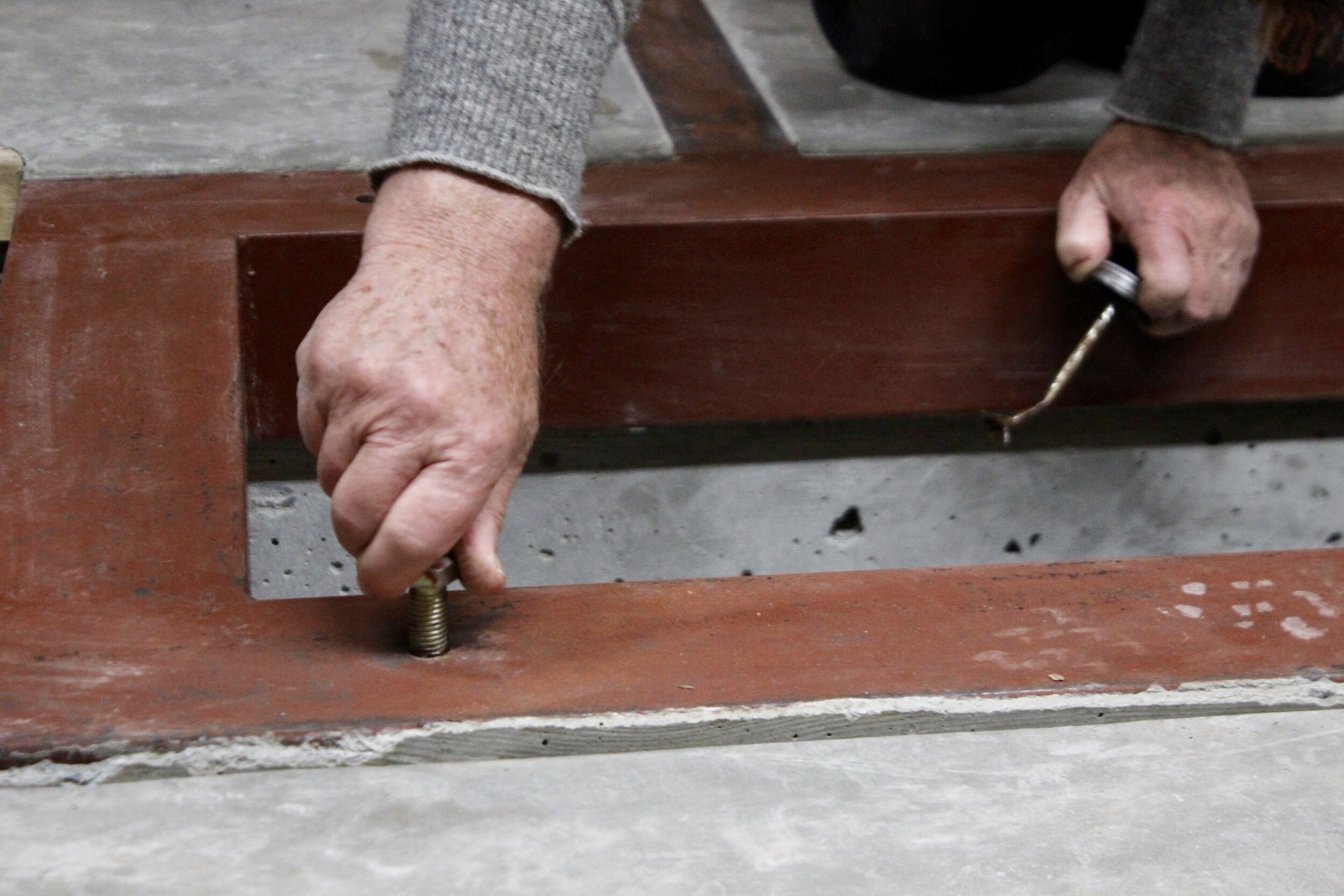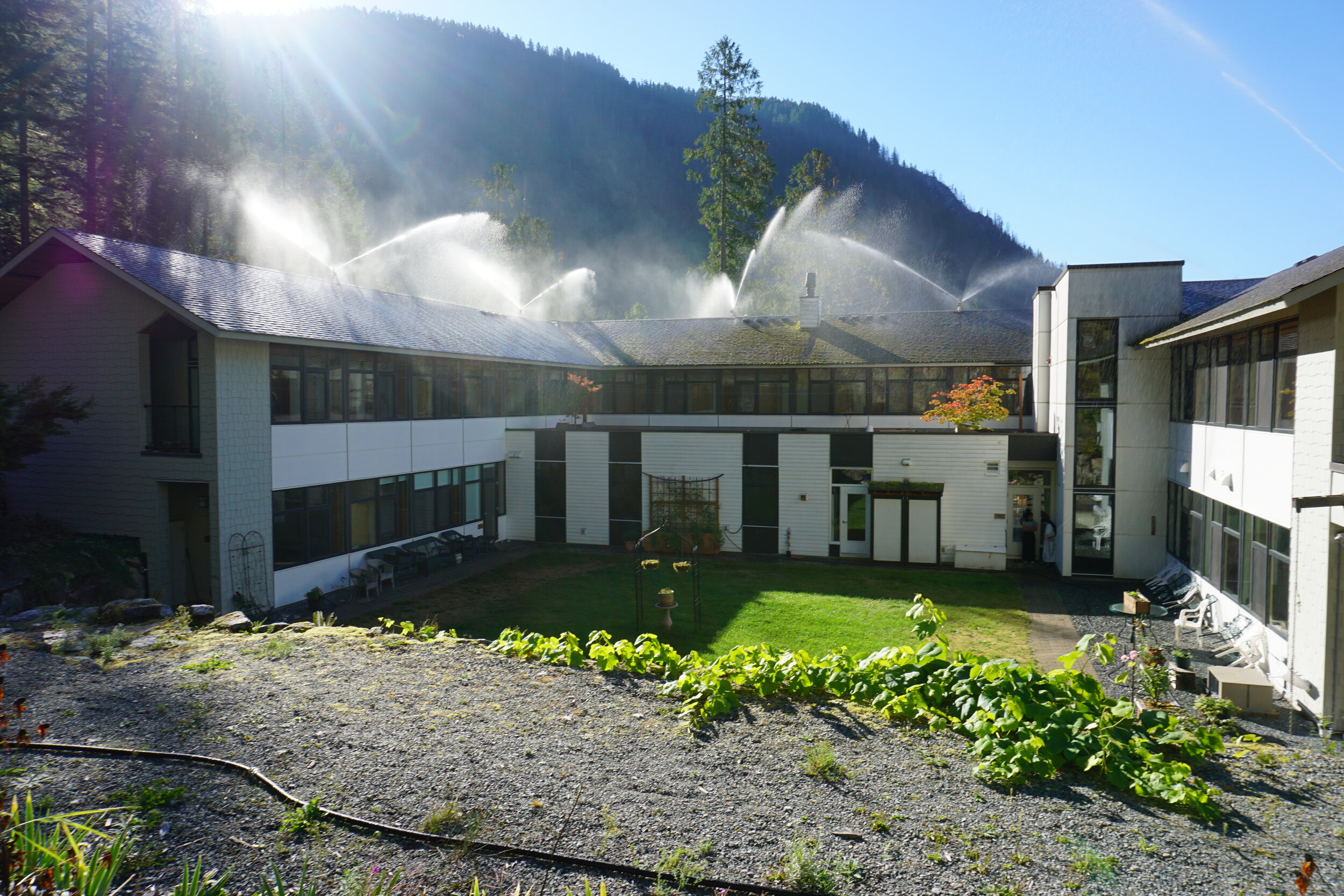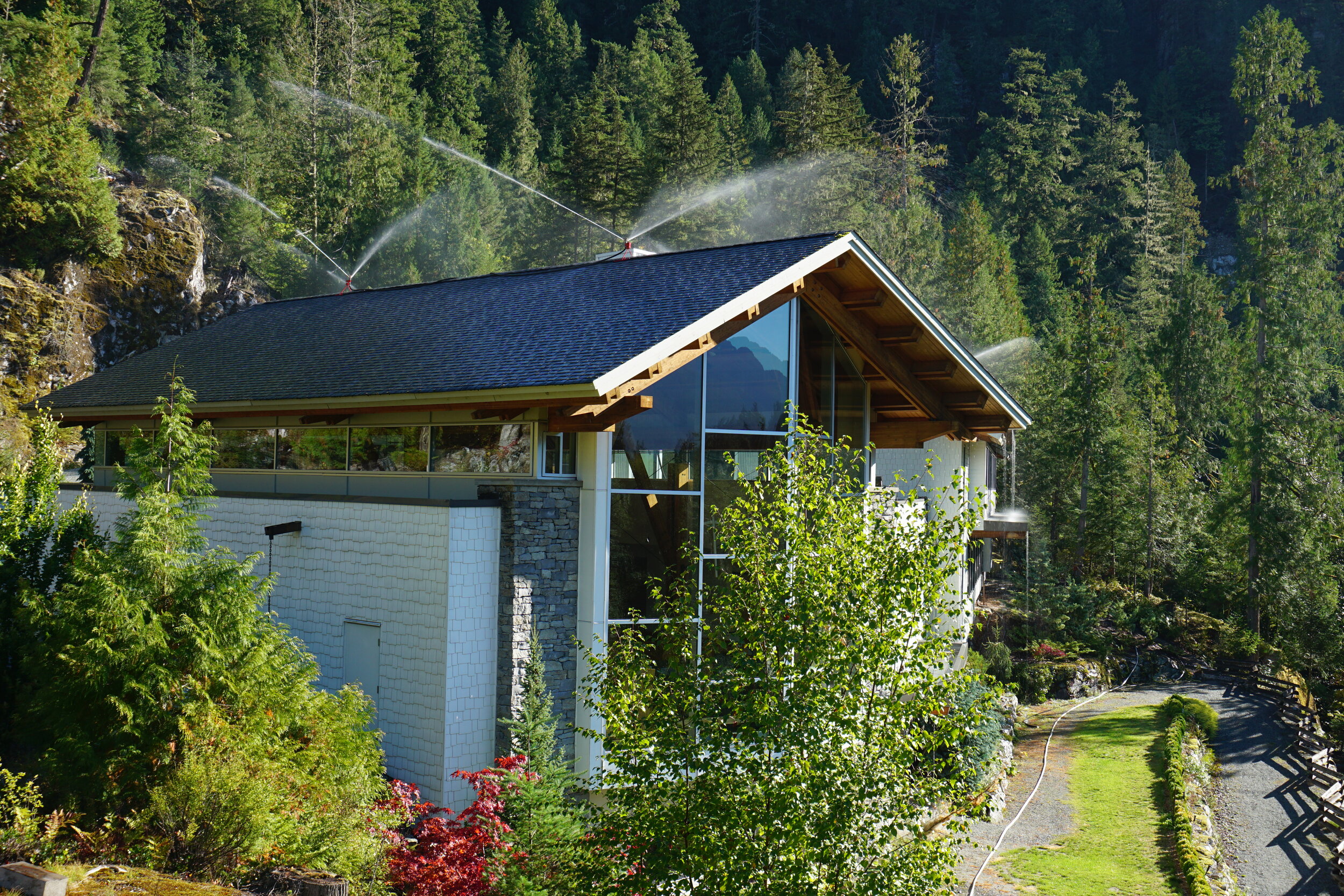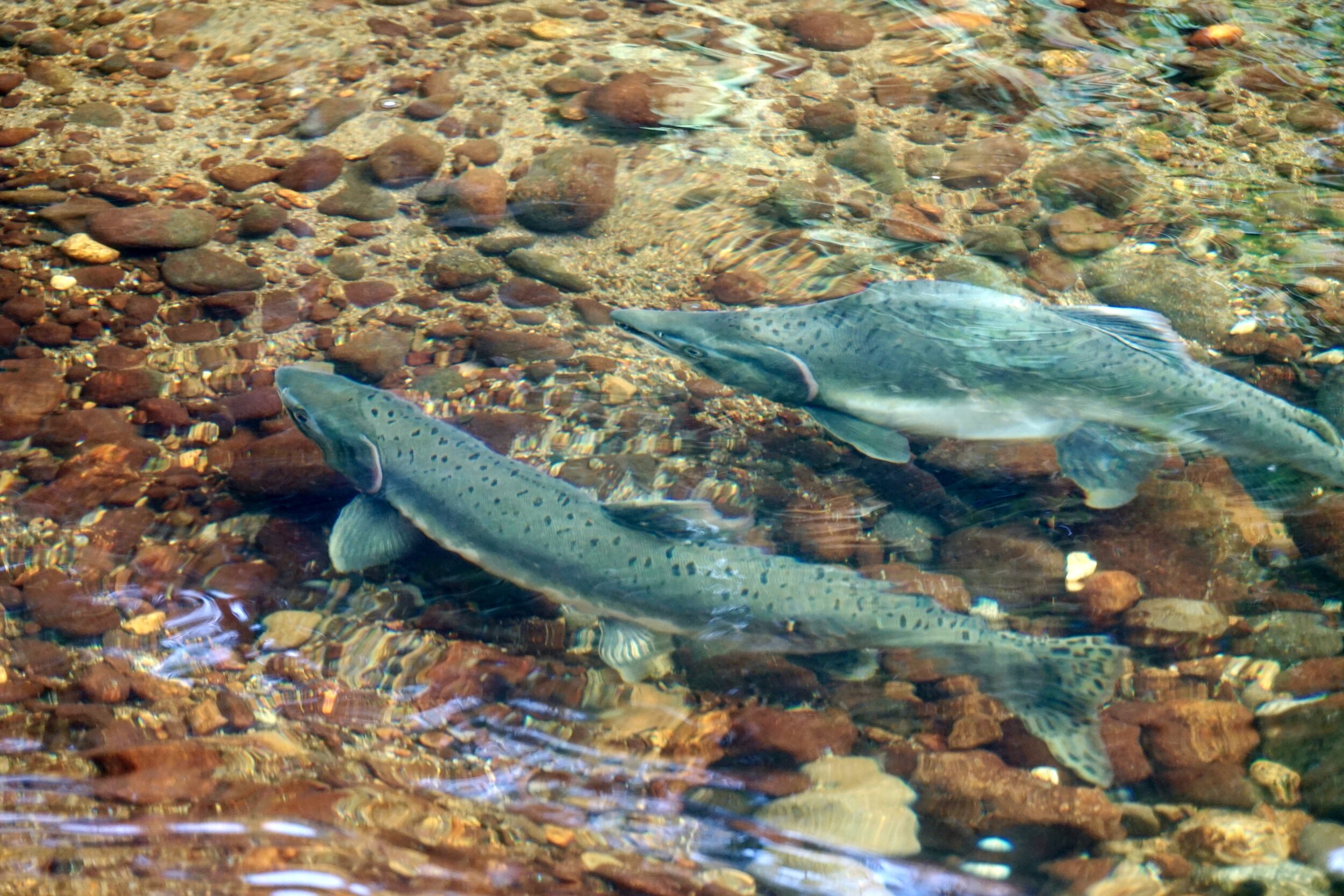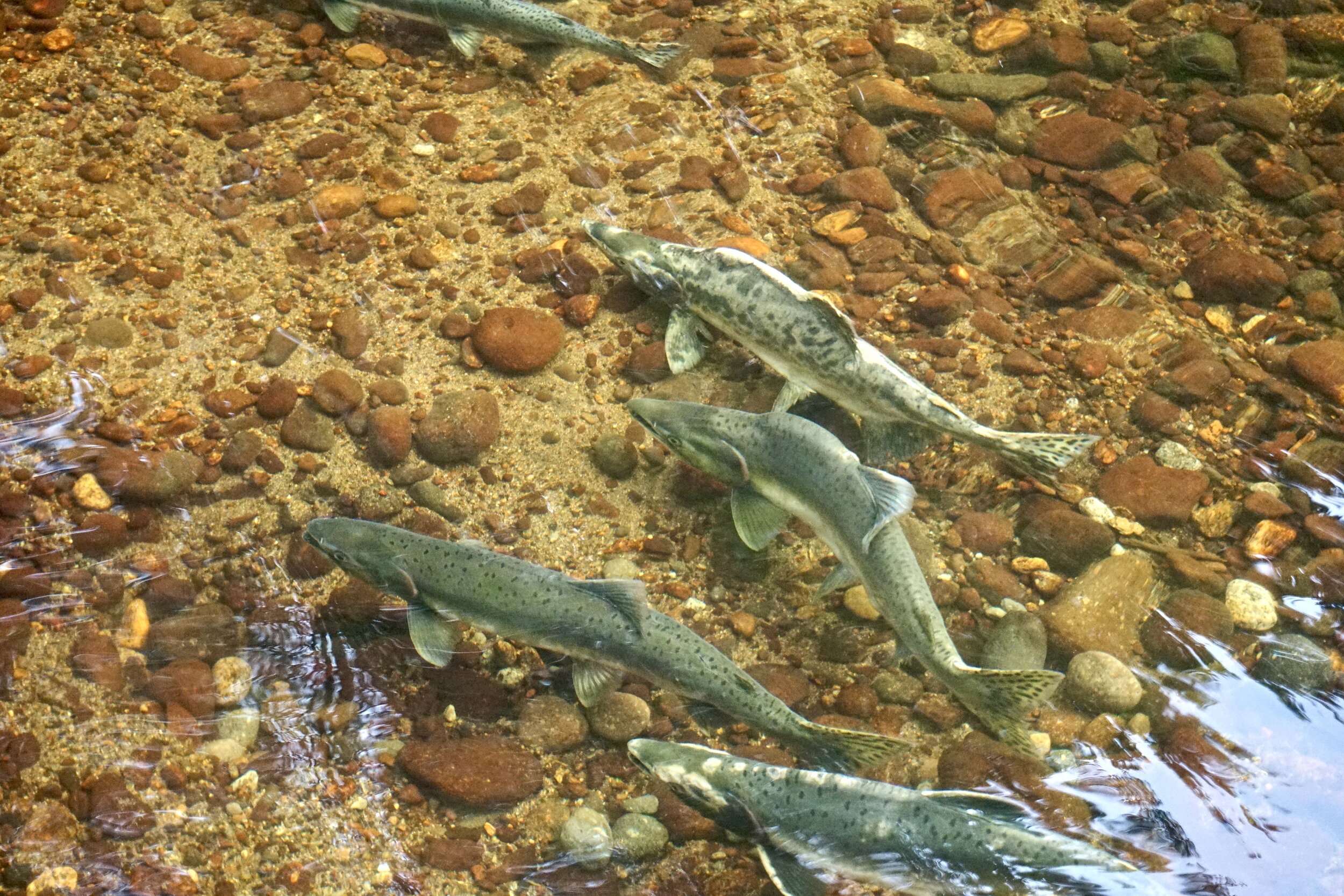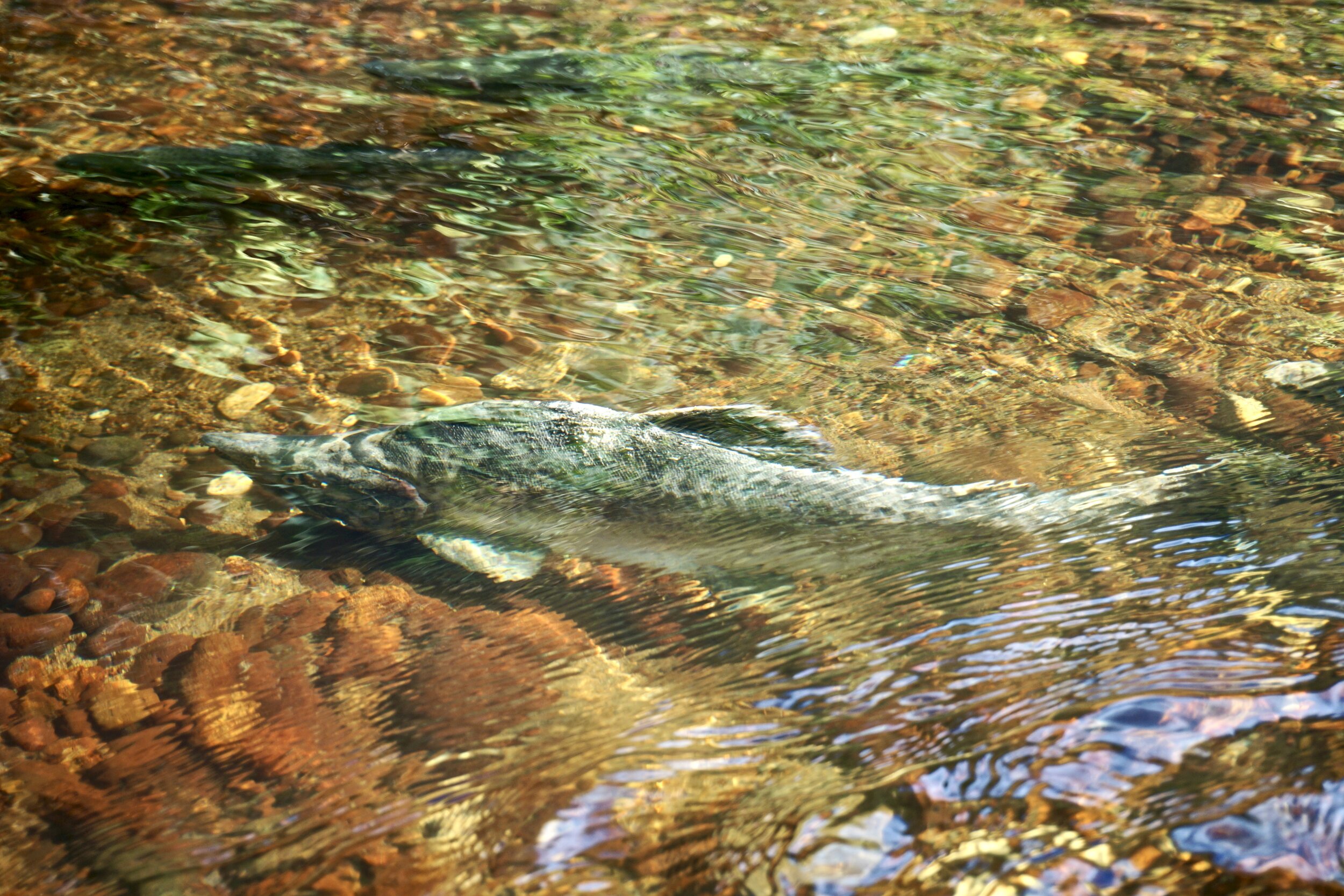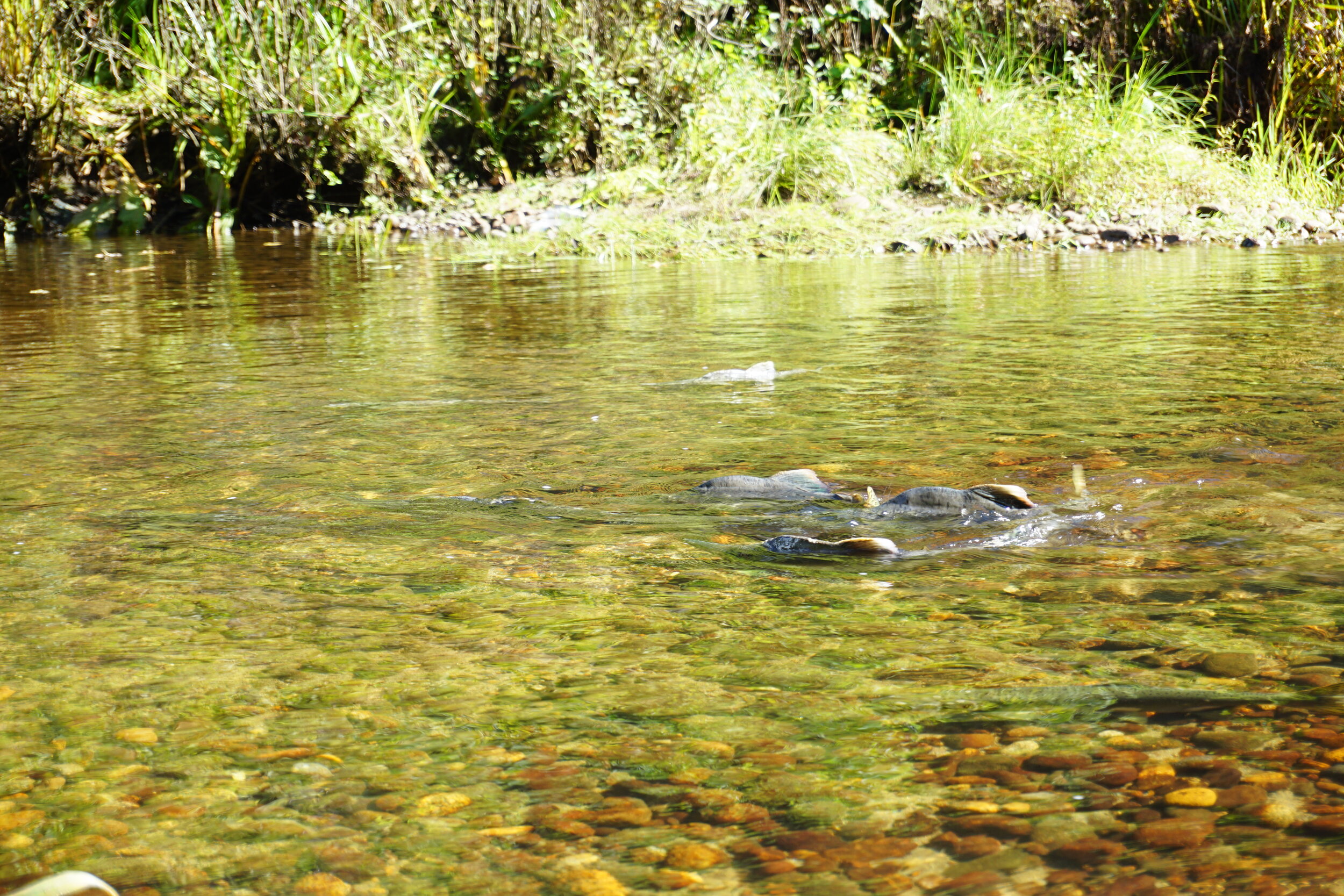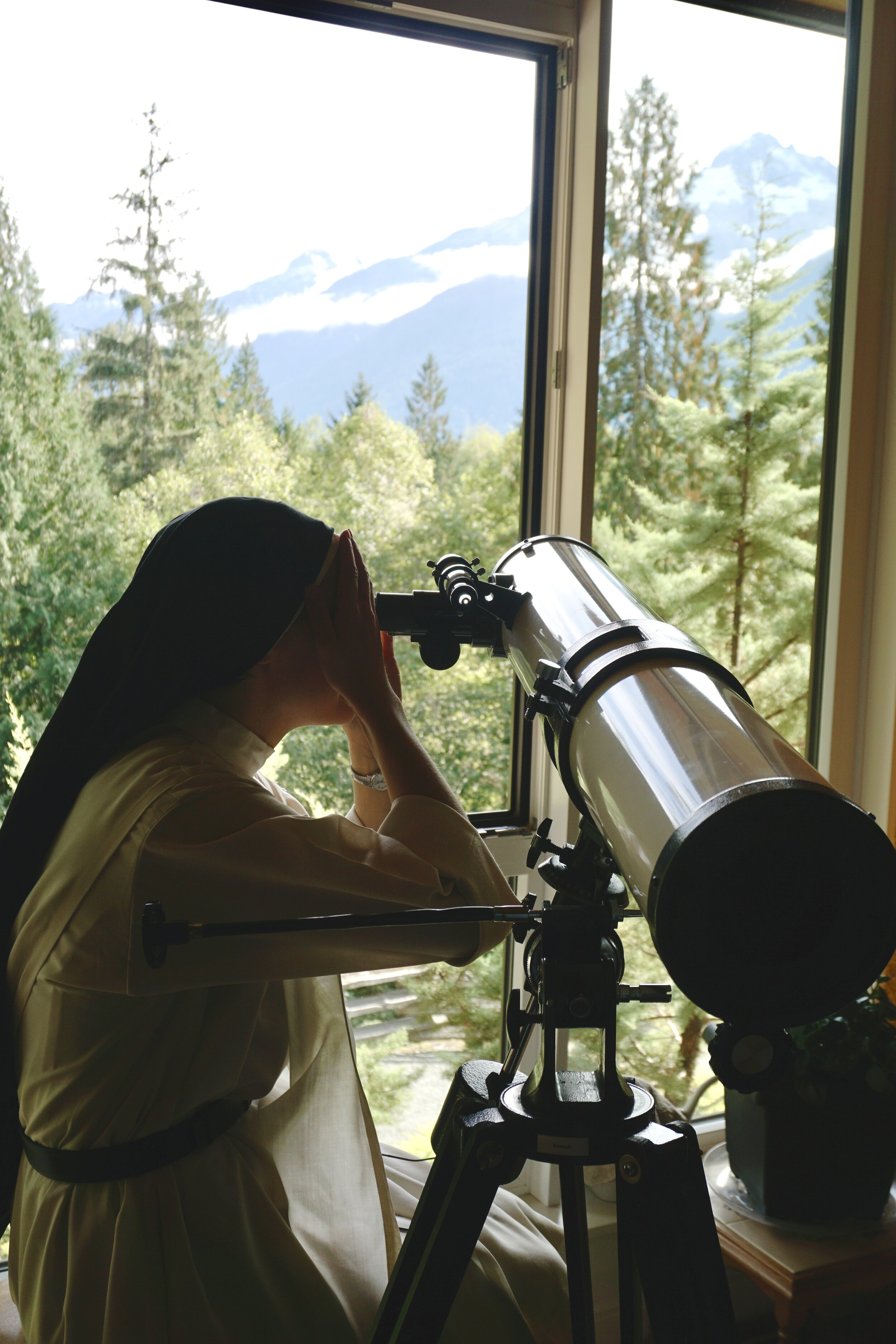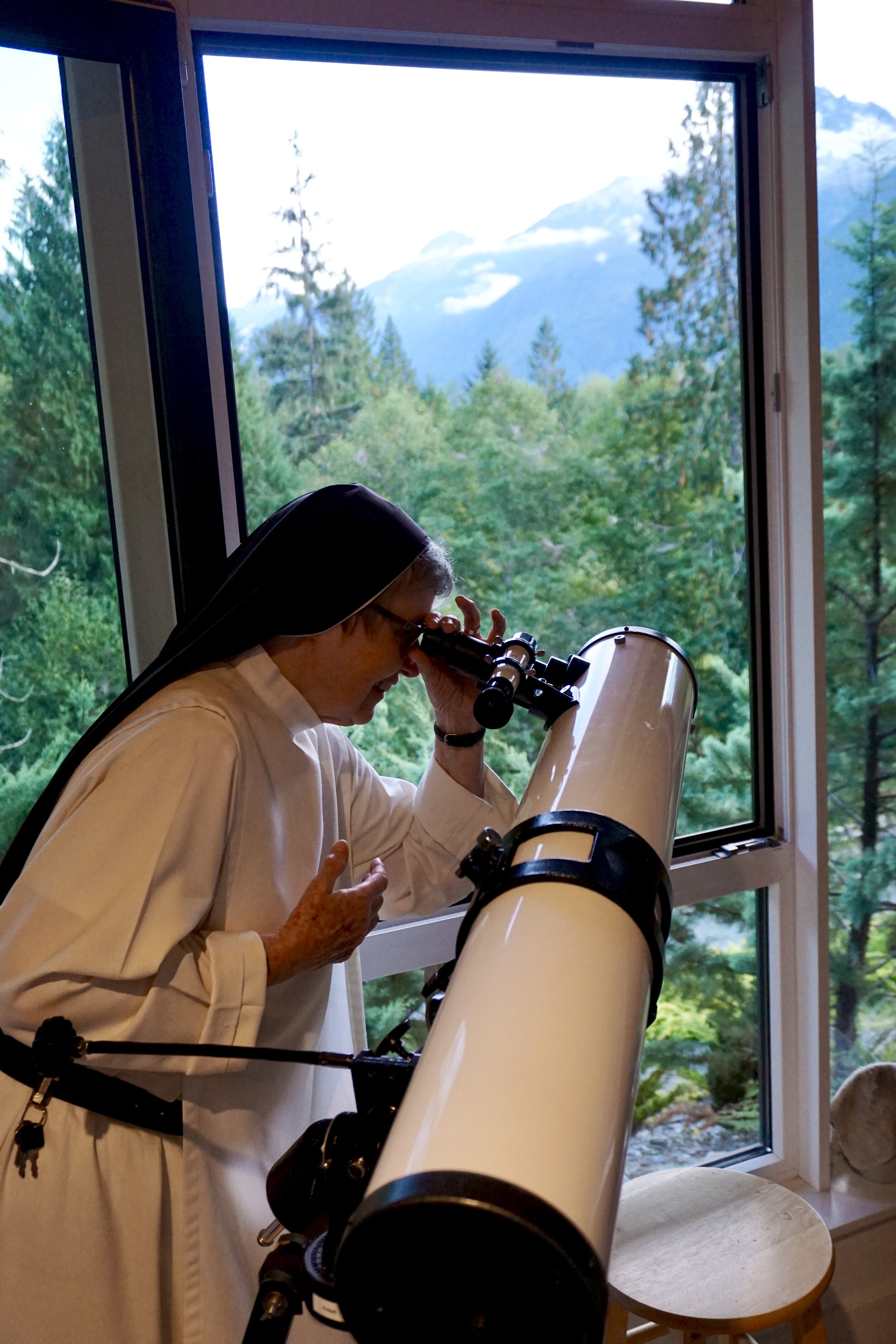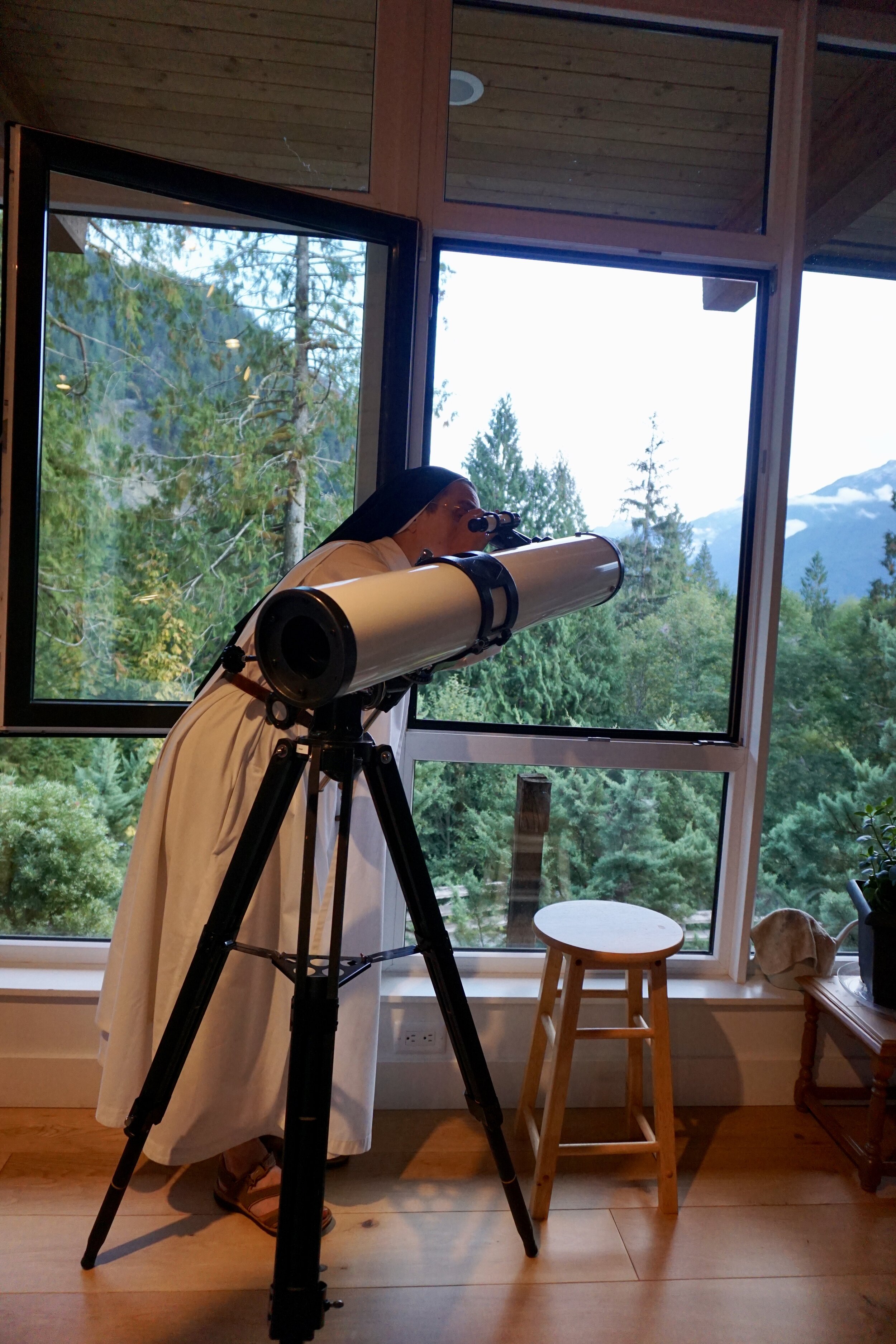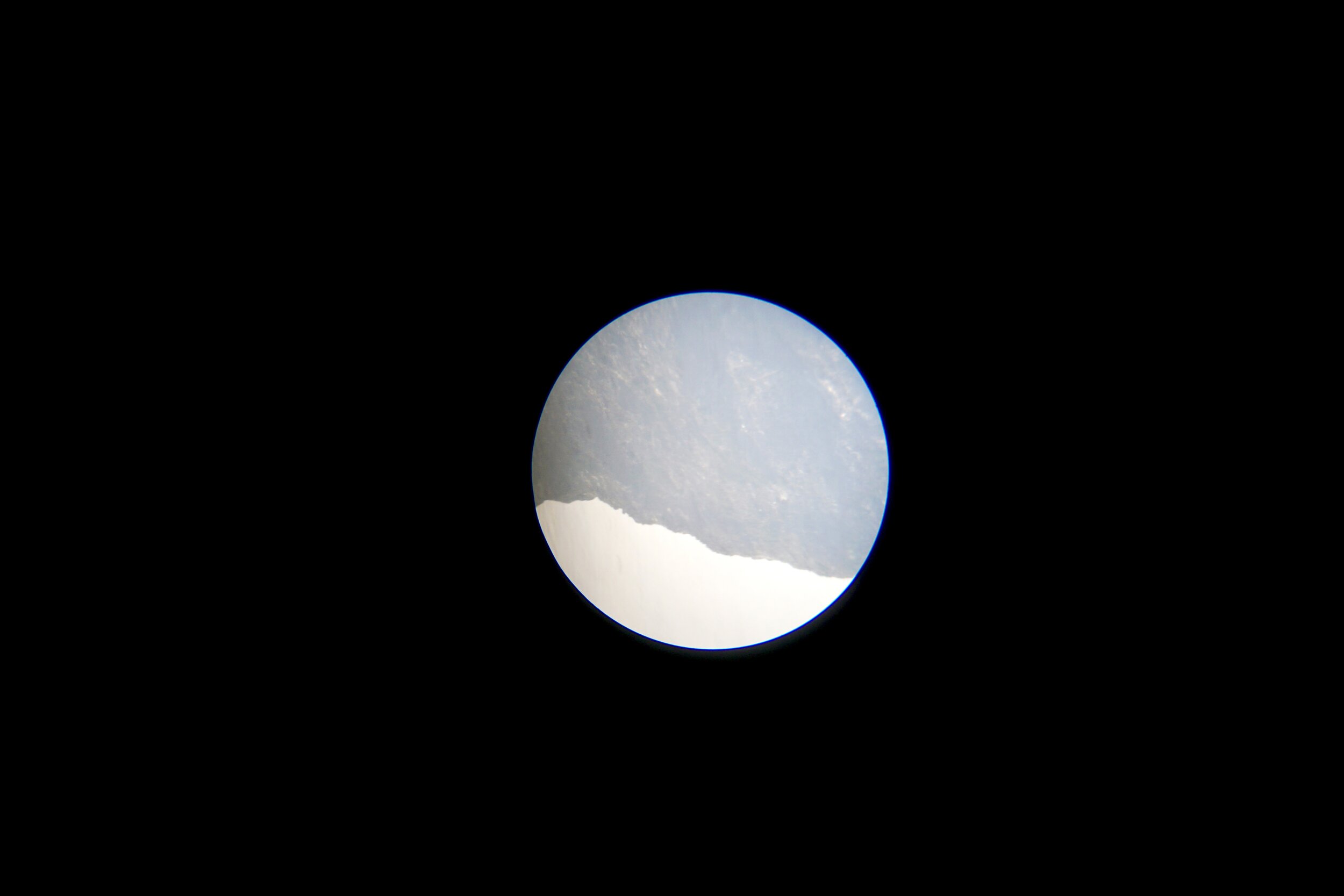When the three kings journeyed to meet Christ, they came bearing gifts of gold, frankincense and myrrh. On the feast of Christ the King this year, He (and our community) received a special gift with the entrance of Mica as a postulant. Joining us from Saskatchewan, she entered just after Terce in order to be with us in choir for the Eucharist later that morning.
A few weeks ago, on the commemoration of All Souls of the Dominican Order, we received another gift with the re-election of Sr. Claire as our prioress for the next three years. Originally from Alberta, Sr. Claire (above photo, left) entered the Order of Preachers in France before being called back to Canada to join our community in its early days in Langley. Our prayers and joy are with her as she continues this time of service.
Finally, we also want to mention the upcoming release of our community’s first-ever calendar, which will be available for purchase through our online and physical gift shops around the beginning of Advent. It features photographs taken by our sisters of the natural beauty which surrounds our monastery in the Upper Squamish Valley, and includes dates for the major Church feasts and civic holidays of the year. We’ll let you know when it’s available to order. In the meantime, you can see a bit of a preview below:
As we look forward to the preparations of Advent, we continue to carry you and your loved ones in prayer. May this season be one of joy for you, and may the gift of our Emmanuel fill your hearts with peace.









